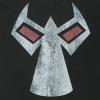Hey!
I want to port this shader: https://www.shadertoy.com/view/XtXyDN, to three.js. I’m new with fragment shaders but I’m using this topic as a semi-guide for how to port this type of frame buffer shader: https://discourse.threejs.org/t/basic-feedback-and-buffer-implementation-with-glsl-shaders/409
Sadly, there seem to be lots of variables that needs to be converted in ways that are unknown for me. And the resources for this type of porting is sparse to say the least. So i’m asking all the shader masters out there for some kind of guidance of how to port this code/variables to make the port successful. Or if someone have good information to direct me to!
I would be very, very, very grateful if someone can help me with this, I could be even pay a bit for the port because its important to me to complete this asap.
Thank you!







